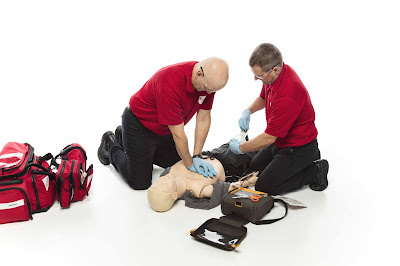Top 6 Tips for Excelling in Remote First Aid
In today's fast-paced world, remote work and travel have become increasingly common. Whether you're an outdoor enthusiast, a digital nomad, or just find yourself in remote areas from time to time, knowing how to provide remote first aid is a valuable skill.
In this blog post, we'll explore the top 6 tips to help you excel in providing first aid in remote settings.
1. Be Prepared with the Right Equipment
When it comes to remote first aid, preparation is key. Make sure you have a well-stocked first aid kit specifically tailored for remote environments. Your kit should include items such as bandages, antiseptic wipes, tweezers, scissors, and any necessary medications for common ailments.
Additionally, consider carrying equipment for signalling or communication, like a satellite phone or a personal locator beacon.
2. Know Basic First Aid Techniques
Having the right equipment is important, but knowing how to use it is even more crucial. Familiarise yourself with basic first aid techniques, such as CPR, wound cleaning, and splinting. Take a remote first aid course or refresh your knowledge regularly to stay confident and competent in handling medical emergencies.
3. Assess the Situation Safely
In remote areas, assessing the situation is often more challenging than in urban environments. Safety should always come first. Before approaching an injured person, ensure that the area is safe for both you and the victim. Be mindful of environmental factors like wildlife, weather conditions, and unstable terrain.
4. Effective Communication is Key
In remote first aid scenarios, effective communication can make a life-saving difference. Ensure you have a way to call for help if needed. Know the emergency contact numbers for the region you're in, and carry a fully charged phone or communication device. Be precise and clear when providing information to emergency services, mentioning your exact location and the nature of the emergency.
5. Prioritize Wound Care and Infection Prevention
In remote settings, the risk of infection can be higher due to limited access to medical facilities. Therefore, proper wound care is essential. Cleanse wounds with clean water and antiseptic wipes from your kit, and cover them with sterile dressings. Be vigilant about infection prevention and keep an eye out for signs of infection in the days following the injury.
6. Stay Calm and Provide Comfort
Lastly, remember that your demeanour can greatly impact the person you're assisting. In a remote first aid situation, staying calm and providing comfort can help alleviate panic and stress. Reassure the injured person and keep them as comfortable as possible while waiting for professional help if needed.
Excelling in remote first aid requires a combination of preparedness, knowledge, and a cool head under pressure. By following these six tips, you can boost your confidence and effectiveness when providing first aid in remote environments. Remember, remote areas can be unpredictable, but with the right skills and mindset, you can make a positive difference when it matters most.
So, whether you're on a wilderness adventure or working remotely in a remote location, be prepared and stay safe!




Comments
Post a Comment